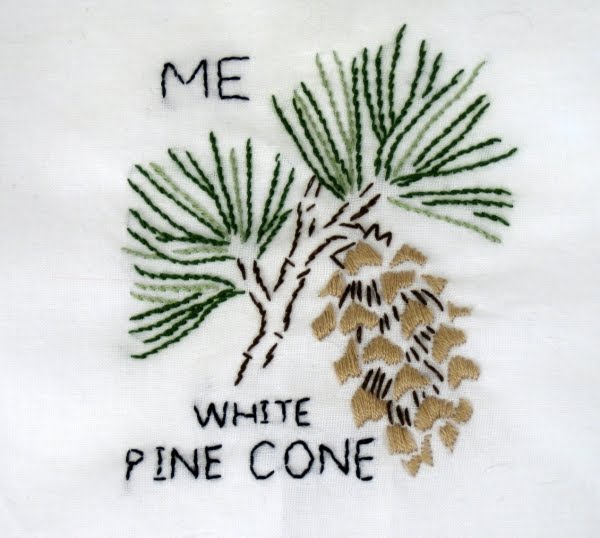The state flower of Maine is not just a beautiful bloom but a symbol of the Pine Tree State's rich natural heritage. Known as the white pine cone and tassel, this flower is a tribute to Maine's vast forests and the unique ecosystems they support. Its delicate appearance and vibrant colors are a reminder of the state's commitment to preserving its natural beauty. As Maine continues to be a beloved destination for nature enthusiasts and tourists alike, the state flower plays a crucial role in representing the essence of this captivating region.
Understanding Maine's state flower involves more than just appreciating its beauty; it requires exploring its historical significance and the role it plays in the state's identity. Designated as the state flower in 1917, the white pine cone and tassel serves as a reminder of the importance of Maine's forestry industry and the need to protect its natural resources. In this article, we will delve into the characteristics of the flower, its cultural significance, and its role in Maine's ecosystem.
As we explore the various facets of Maine's state flower, we will discuss its unique attributes, the challenges it faces, and how it is celebrated within the state. With its intricate beauty and ecological importance, the white pine cone and tassel is more than just a flower; it is a representation of Maine's spirit and commitment to preserving its natural landscapes.
What Is the Maine State Flower?
The Maine state flower, the white pine cone and tassel, is derived from the Eastern White Pine tree, scientifically known as Pinus strobus. This tree is one of the most significant species in the northeastern United States and is known for its tall, straight trunk and soft, flexible needles. The flower itself consists of both the male and female reproductive parts, with the male flowers being small and yellow and the female flowers developing into the iconic pine cones.
Why Was the White Pine Cone and Tassel Chosen as Maine's State Flower?
The choice of the white pine cone and tassel as Maine's state flower was influenced by the tree's historical and economic importance to the region. In the 18th and 19th centuries, the Eastern White Pine was a vital resource for shipbuilding and construction, contributing significantly to Maine's economy. The tree's ability to thrive in the state's climate and its majestic stature made it a fitting emblem for Maine, leading to its designation as the state flower.
Where Can You Find the Maine State Flower?
The white pine cone and tassel can be found throughout Maine's forests, particularly in regions with sandy or well-drained soils. These trees thrive in a variety of environments, from coastal areas to mountainous regions. The flower typically blooms in late spring and early summer, attracting various pollinators and contributing to the biodiversity of Maine's ecosystems.
What Are the Characteristics of the White Pine Cone and Tassel?
- Appearance: The female flowers are green and develop into elongated cones, while the male flowers are yellow and clustered.
- Height: Eastern White Pines can grow up to 80-100 feet tall, making them one of the tallest trees in New England.
- Needles: The tree has soft, flexible needles that grow in clusters of five, giving it a unique appearance.
How Does the Maine State Flower Contribute to the Ecosystem?
The white pine cone and tassel play a vital role in Maine's ecosystem by providing habitat and food for various wildlife species. Birds, such as the red-breasted nuthatch and crossbills, rely on the seeds found in the pine cones for nourishment. Additionally, the tree provides shelter and nesting sites for numerous animals, contributing to the overall health of Maine's forests.
What Challenges Does the Maine State Flower Face?
Despite its resilience, the white pine cone and tassel faces several challenges, including climate change, invasive species, and logging practices. These factors can impact the health of the Eastern White Pine population and the ecosystems that depend on it. Conservation efforts are essential to ensure the continued survival of this iconic species and its role in Maine's natural landscape.
How Is the Maine State Flower Celebrated?
Maine celebrates its state flower through various events and initiatives aimed at raising awareness about the importance of the Eastern White Pine. Educational programs in schools focus on the historical and ecological significance of the flower, while local organizations often host tree planting events and conservation efforts to protect Maine's forests.
What Can You Do to Support Maine's State Flower?
There are several ways to support the Maine state flower and its ecosystem:
- Participate in local conservation efforts: Join organizations that focus on protecting Maine's natural resources and forests.
- Plant native trees: Consider planting Eastern White Pines and other native species in your yard to support local wildlife.
- Educate others: Share information about the white pine cone and tassel with friends, family, and community members to raise awareness.
Conclusion: The Enduring Legacy of the Maine State Flower
The Maine state flower, the white pine cone and tassel, is a beautiful representation of the state's natural heritage and ecological diversity. Its historical significance, unique characteristics, and role in supporting local wildlife make it a vital part of Maine's identity. By understanding and supporting this remarkable flower, we can help ensure its preservation for future generations to enjoy.
Deliciously Unique: Ina Garten's Salmon Cakes
Exploring The Roots: Deray Davis's Mother And Father
The Epic Journey Of The Sword Tour

